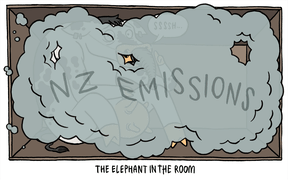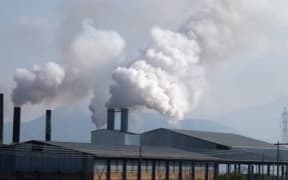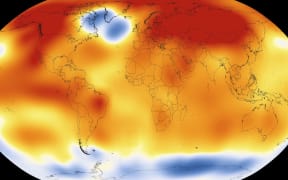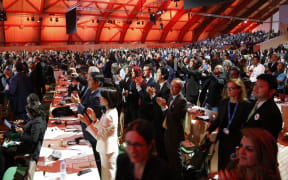The Paris climate change talks are over and now it's time to get down to business.
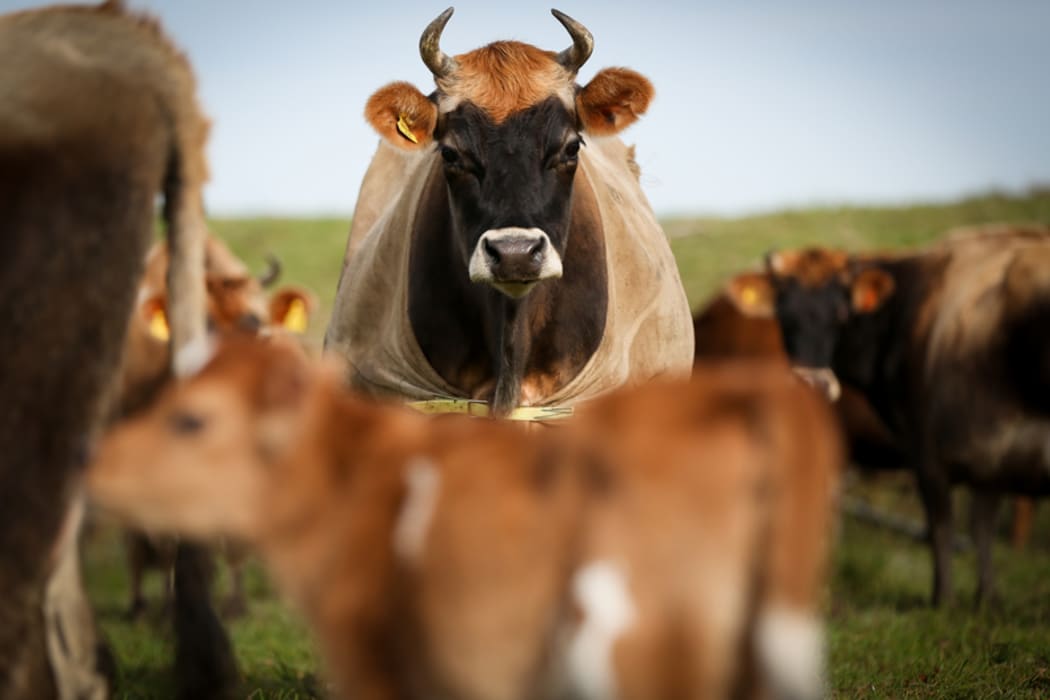
Agriculture contributes almost half of New Zealand's greenhouse gas emissions. Photo: RNZ / Alexander Robertson
The Emissions Trading Scheme (ETS) is New Zealand's main tool to help the country reduce greenhouse gas emissions and move to a low-carbon economy, and it is up for review.
But it is a complex beast, and the way it is currently set out will have little impact on reducing emissions according to the government, which is why it needs to change.
What exactly is the ETS?
The ETS limits greenhouse gas emissions, by requiring that tonnes of carbon emitted by certain sectors of the economy such as industry, electricity and transport are matched by New Zealand Units (NZUs).
These are a form of currency and the government can limit the number available.
When a business brings fossil fuels into New Zealand, they buy a New Zealand Unit to match the emissions from that fuel. (At the moment, the government is running a one-for-two deal, but more on that later.)
The idea is that making businesses (and their consumers, who may be other businesses) pay for their greenhouse gases, which contribute to climate change, will encourage them to reduce emissions through changing their practices or investing in new technology.
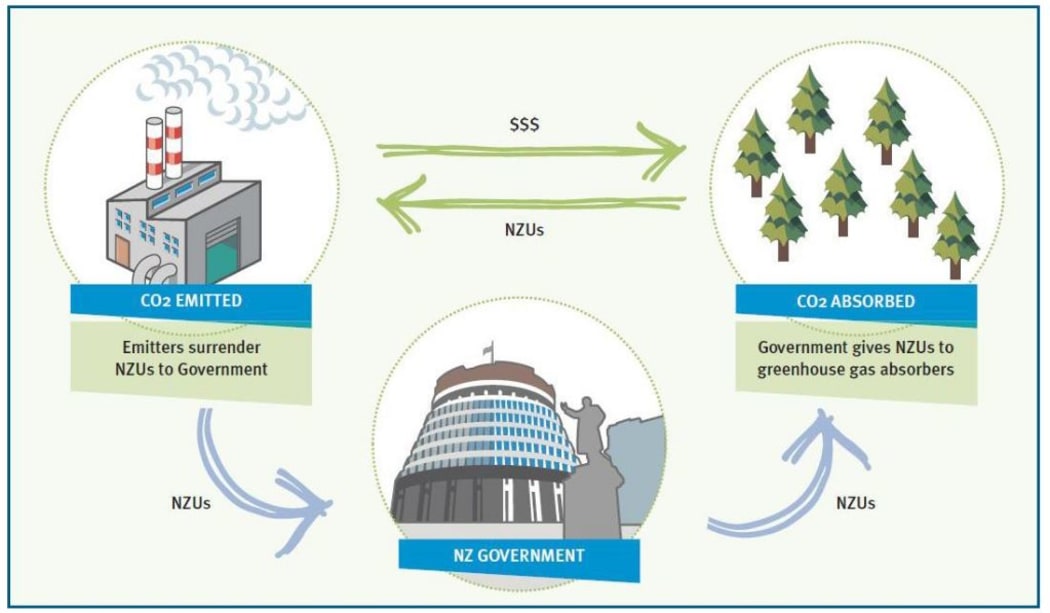
The basic concept of New Zealand's ETS - as explained by the Ministry for the Environment Photo: MFE
On the flip side, forestry owners can earn NZUs from blocks of trees because they absorb carbon. These NZUs can be sold on to the polluters for a price, which at the moment is set by the market.
The sectors required to surrender NZUs have to submit them to the government on an annual basis, which uses them to meet New Zealand's international obligations.
What is an NZU?
It is this country's unit of trade, or sometimes called a carbon credit or allowance.
An NZU represents one metric tonne of carbon dioxide, or the equivalent of any other greenhouse gas - including nitrous oxide, methane and hydrofluorocarbons, among others.
The government runs the New Zealand Emissions Unit Registry: an electronic registry that shows who holds NZUs. It's a little like a bank.
Through this, it can allocate units into the market by selling them (though it hasn't yet done this), giving them to emissions-intensive trade-exposed businesses, or awarding them to firms that are undertaking carbon removal activities, such as forestry owners.
Can't we just buy units from other countries?
The government stopped allowing companies to use overseas units last year.
However, overseas units have played a part in ensuring that New Zealand has met its international emissions targets.
But there has been concern over the integrity of the international units, many of which were purchased very cheaply from Ukraine and Russia, and questions were raised over whether they were a result of genuine emission reductions.
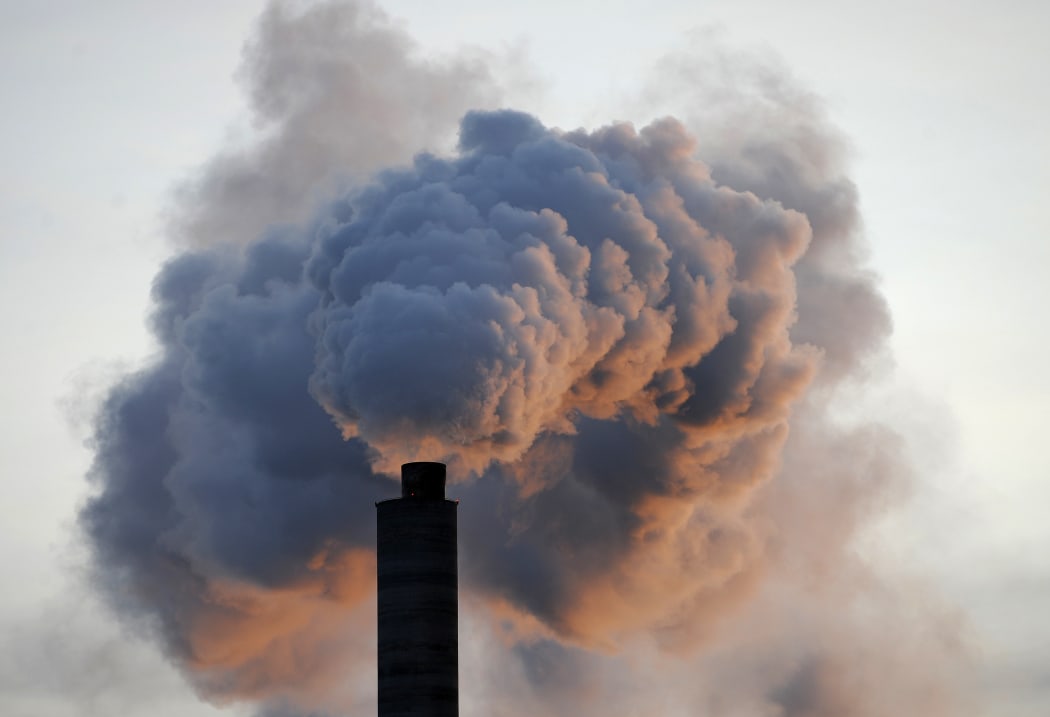
Emissions trading schemes rely on businesses paying to offset their pollution. Photo: AFP
The international units also had an impact on the New Zealand market. When they became cheap, it reduced the price that polluters had to pay for their emissions. This went against the purpose of the ETS: to create an incentive for emissions reductions.
The current review suggests that, in order for New Zealand to meet its 2030 target, people will need to be able to buy international carbon credits.
It's not clear how this will work - a new more credible system is needed.
What exactly is a carbon price?
It is hoped putting a dollar price on every tonne of carbon emitted will drive businesses to make changes - they have a financial incentive to do so, and they can make clean investments without losing money.
Or they can pass on the cost to their customers, which in turn can encourage customers to change their behaviours, or put pressure on businesses to look more at their carbon footprint.
At the moment, the market dictates the price of carbon price. It's exactly like the price of most things - the greater the demand and the lower the supply, the higher the price.
There is a ceiling on the price: $25, which was set by the government when the system started so people could purchase NZUs direct from the Crown instead of buying them from the market.
The review is considering whether this is at the right level.
What sectors are covered by the ETS?
Businesses involved in forestry, transport fuels, providing fuel to stationary energy users such as power plants or industrial boilers, industrial processes (cement, steel and aluminium), synthetic gases and waste are all required to submit NZUs for their emissions.
We'll talk about forestry in a moment, but the rest are legally obliged to buy and surrender NZUs.
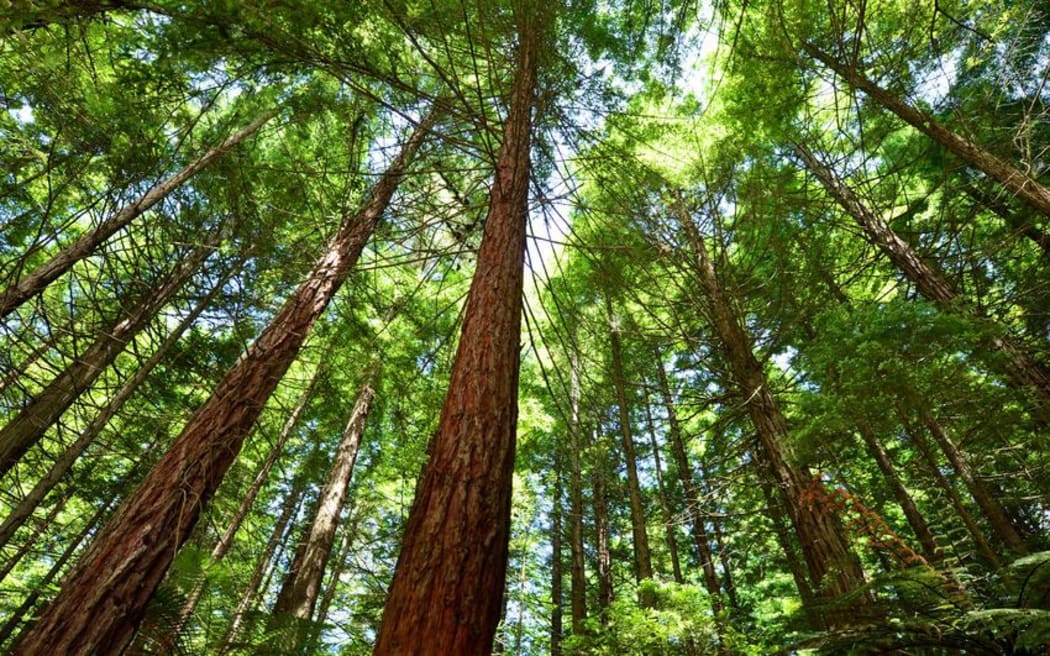
Forestry owners earn NZUs from their trees, which absorb carbon. Photo: 123rf
Agriculture is not required to purchase NZUs to match biological emissions (mostly from cows and sheep and soils) despite contributing almost half of New Zealand's greenhouse gas emissions.
The sector argues it does contribute, through the purchase of energy and transport fuels. These sectors pass the cost of being part of the ETS on to their customers.
If agriculture makes up so much of NZ's emissions why is it excluded?
A very good question.
More on this issue here
The agricultural sector is required to report biological emissions that are produced on farms, but not pay for them.
But the country still has to pay for agriculture's emissions, which means the taxpayer effectively subsidises the sector.
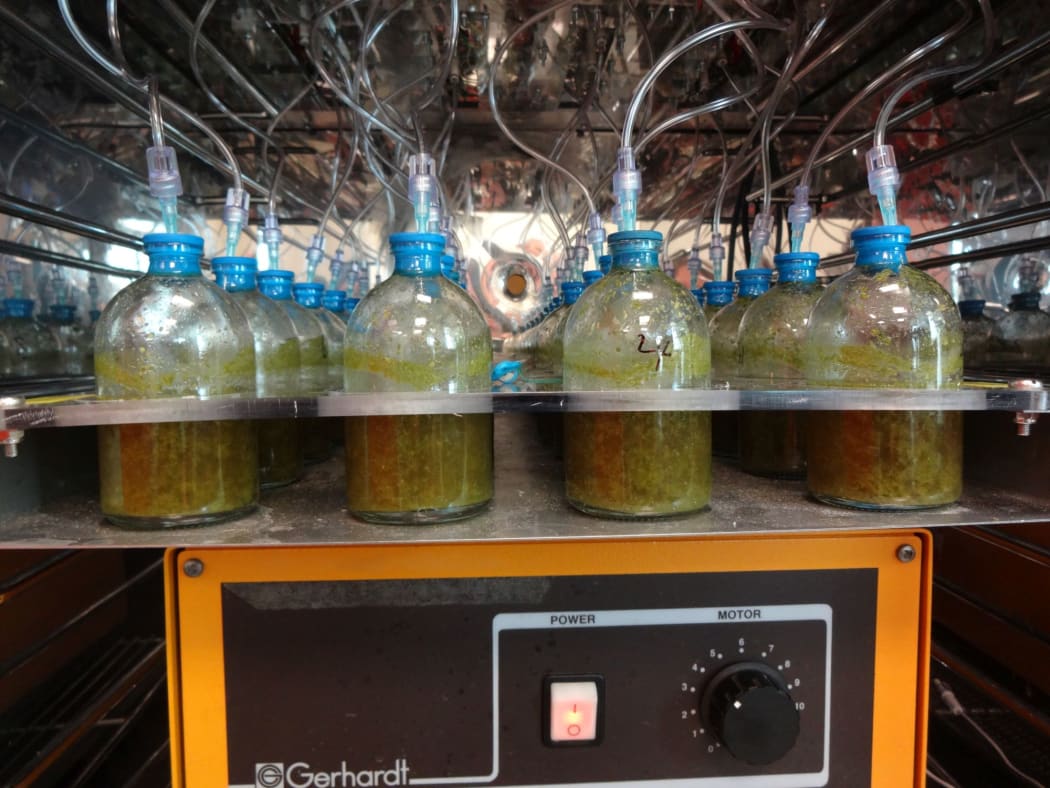
Scientists at AgResearch have been trying to discover possible methane-reducing compounds in rumen fluid. Photo: RNZ / Veronika Meduna
The government has said it would be unfair to include agriculture in the scheme, because farms would have to compete internationally with other countries whose farming sectors are not part of a similar scheme - therefore disadvantaging New Zealand farmers and reducing the value of their farms.
In 2012, the government committed to considering the inclusion of agriculture in the ETS - but has now completely ruled it out of this review, saying it won't be included until two criteria are met.
The first is that economically viable and practical technologies are available to reduce agriculture emissions, and the second is that New Zealand's trading partners make more progress on tackling their emissions.
What about forestry?
Forestry is the country's main tool for actually reducing New Zealand's emissions because trees absorb carbon, and the bigger forests get the more they absorb, forests are often referred to as a 'carbon sink'.
There are two categories of forests - those planted before 1990, and those planted after.
If forests were planted before 1990 they are not eligible to receive or obliged to surrender units unless they deforest.
Post-1990 forests can choose to enter the ETS and earn and surrender NZUs as they grow or cut down trees.
What's all this about a one-for-two deal?
One-for-two means players in the liquid fossil fuels, industrial processes, stationary energy and waste sector are allowed to surrender one NZU for every two tonnes of carbon emitted, effectively halving the price of emitting.
It was introduced in 2009 by the government to soften the blow of entering fully into the ETS because of the Global Financial Crisis.
In 2011, it was decided to continue the arrangement, but it is up for review this time - and many believe it will be scrapped as early as this year.
The Ministry for the Environment has said scrapping one-for-two would help New Zealand meet its international obligations in the 2020s. It could also help the taxpayer.
What else is the review looking at?
It is also considering whether to keep the price ceiling of an NZU at $25. Because it is capped, polluters are protected if carbon prices rise - but that price was set eight years ago.
So if the one-for-two scheme is scrapped, polluters will be paying a maximum of $25 per unit instead of $12.50 (at the moment, they're paying much less).
Submissions on the one-for-two scheme and the $25 cap closed last week, but submissions on the wider scheme close in April.
The wider review includes how NZUs will be supplied to the ETS, including access to international markets, whether NZUs should be auctioned and how to ensure stable carbon prices.
The ETS agreement is expected to be signed this year but much of the detail underpinning it might be agreed over the next few years.
